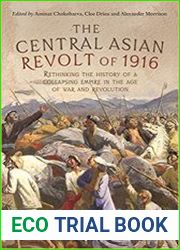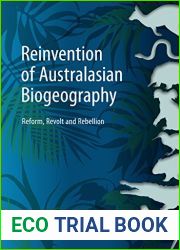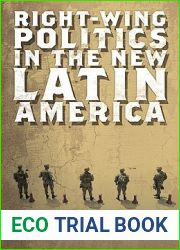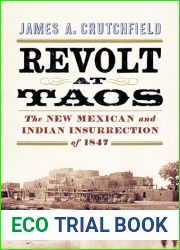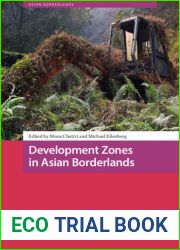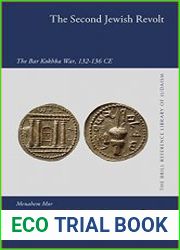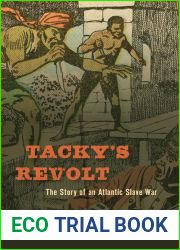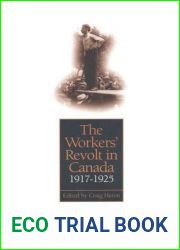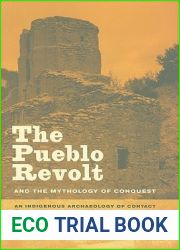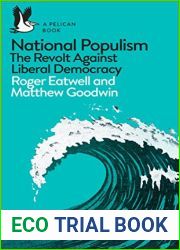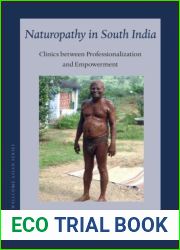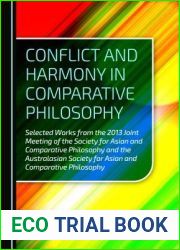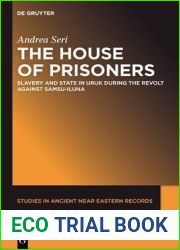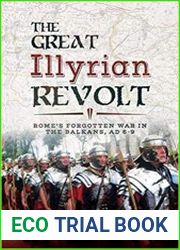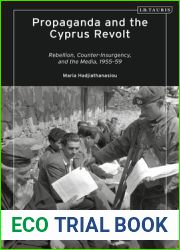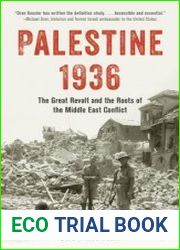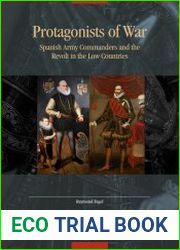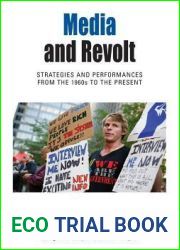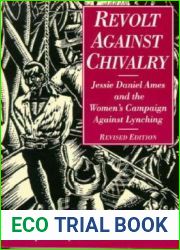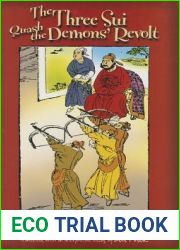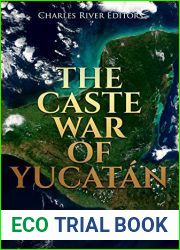
BOOKS - MILITARY HISTORY - The Central Asian Revolt of 1916 A collapsing empire in th...

The Central Asian Revolt of 1916 A collapsing empire in the age of war and revolution
Author: Alexander Morrison,Aminat Chokobaeva
Year: 2019
Pages: 384
Format: PDF
File size: 4,3 MB
Language: ENG

Year: 2019
Pages: 384
Format: PDF
File size: 4,3 MB
Language: ENG

It draws on recent research and new archival evidence to explore the political social economic and military aspects of this crucial turning point. The book provides fresh insights into the nature of Russian power in the region, the role of local elites, the impact of the War on the Muslim world, and the significance of the Revolt in the context of global conflict. The Central Asian Revolt of 1916 was a pivotal moment in the history of Central Asia and the Russian Empire, occurring during the First World War. This seminal event had far-reaching consequences that are still felt today, and it is essential to understand its causes, course, and consequences to gain a deeper appreciation of the complex dynamics at play. This comprehensive reassessment of the Revolt, based on recent research and new archival evidence, offers fresh insights into the nature of Russian power in the region, the role of local elites, the impact of war on the Muslim world, and the significance of the Revolt within the context of global conflict. The book begins by delving into the political, social, economic, and military factors that led to the outbreak of the Revolt, highlighting the tensions between Russia and Central Asia that had been simmering for years. It explores how these tensions were exacerbated by the demands of the First World War, which placed an enormous strain on the Russian Empire's resources and infrastructure. The authors examine how this strain, combined with the failures of Russian colonial policies and the growing unrest among Central Asian populations, ultimately led to the explosion of violence in 1916. The book then delves into the events of the Revolt themselves, providing a detailed account of the uprisings, protests, and armed struggles that took place across the region.
Он опирается на последние исследования и новые архивные данные для изучения политических, социально-экономических и военных аспектов этого важнейшего поворотного момента. Книга дает свежее понимание природы российской власти в регионе, роли местных элит, влияния Войны на мусульманский мир и значения Восстания в контексте глобального конфликта. Центральноазиатское восстание 1916 года стало поворотным моментом в истории Центральной Азии и Российской империи, произошедшим во время Первой мировой войны. Это основополагающее событие имело далеко идущие последствия, которые ощущаются до сих пор, и важно понять его причины, ход и последствия, чтобы глубже оценить сложную динамику в игре. Эта всесторонняя переоценка Восстания, основанная на недавних исследованиях и новых архивных данных, предлагает новое понимание природы российской власти в регионе, роли местных элит, влияния войны на мусульманский мир и значения Восстания в контексте глобального конфликта. Книга начинается с изучения политических, социальных, экономических и военных факторов, которые привели к началу восстания, подчеркивая напряженность между Россией и Центральной Азией, которая кипела в течение многих лет. В нем исследуется, как эта напряженность усугублялась требованиями Первой мировой войны, которая создала огромную нагрузку на ресурсы и инфраструктуру Российской империи. Авторы исследуют, как этот штамм в сочетании с провалами российской колониальной политики и растущими беспорядками среди населения Центральной Азии в конечном итоге привел к взрыву насилия в 1916 году. Затем книга углубляется в сами события восстания, предоставляя подробный отчет о восстаниях, протестах и вооруженная борьба, которая имела место по всему региону.
Il s'appuie sur des recherches récentes et de nouvelles données archivées pour étudier les aspects politiques, socioéconomiques et militaires de ce tournant crucial. livre donne une nouvelle compréhension de la nature du pouvoir russe dans la région, du rôle des élites locales, de l'impact de la guerre sur le monde musulman et de l'importance de la rébellion dans le contexte du conflit mondial. L'insurrection d'Asie centrale de 1916 a marqué un tournant dans l'histoire de l'Asie centrale et de l'Empire russe pendant la Première Guerre mondiale. Cet événement sous-jacent a eu des conséquences considérables qui ont été ressenties jusqu'à présent, et il est important de comprendre ses causes, son évolution et ses conséquences afin de mieux apprécier la dynamique complexe du jeu. Cette réévaluation complète de la rébellion, basée sur des recherches récentes et de nouvelles données archivées, offre une nouvelle compréhension de la nature du pouvoir russe dans la région, du rôle des élites locales, de l'impact de la guerre sur le monde musulman et de l'importance de la rébellion dans le contexte du conflit mondial. livre commence par une étude des facteurs politiques, sociaux, économiques et militaires qui ont conduit au déclenchement de la rébellion, soulignant les tensions entre la Russie et l'Asie centrale, qui ont bouilli pendant de nombreuses années. Il examine comment ces tensions ont été exacerbées par les exigences de la Première Guerre mondiale, qui a mis un énorme fardeau sur les ressources et les infrastructures de l'Empire russe. s auteurs étudient comment cette souche, combinée aux échecs de la politique coloniale russe et aux troubles croissants au sein de la population d'Asie centrale, a finalement provoqué une explosion de violence en 1916. livre se penche ensuite sur les événements de la rébellion en fournissant un compte rendu détaillé des soulèvements, des manifestations et des luttes armées qui ont eu lieu dans toute la région.
Se basa en estudios recientes y nuevos datos de archivo para examinar los aspectos políticos, socioeconómicos y militares de este crucial punto de inflexión. libro ofrece una nueva comprensión de la naturaleza del poder ruso en la región, el papel de las élites locales, la influencia de la Guerra en el mundo musulmán y los significados de la Rebelión en el contexto de un conflicto global. La revuelta de Asia Central de 1916 marcó un punto de inflexión en la historia de Asia Central y el Imperio ruso, que tuvo lugar durante la Primera Guerra Mundial. Este acontecimiento fundamental ha tenido consecuencias de largo alcance que se sienten hasta ahora, y es importante entender sus causas, su curso y sus consecuencias para apreciar más profundamente la compleja dinámica en el juego. Esta reevaluación integral de la Revuelta, basada en estudios recientes y nuevos datos de archivo, ofrece una nueva comprensión de la naturaleza del poder ruso en la región, el papel de las élites locales, el impacto de la guerra en el mundo musulmán y la importancia de la Revuelta en el contexto de un conflicto global. libro comienza con un estudio de los factores políticos, sociales, económicos y militares que condujeron al inicio de la revuelta, destacando las tensiones entre Rusia y Asia Central, que habían estado hirviendo durante . Explora cómo esta tensión se vio agravada por las exigencias de la Primera Guerra Mundial, que creó una enorme presión sobre los recursos y la infraestructura del Imperio ruso. autores investigan cómo esta cepa, combinada con los fracasos de la política colonial rusa y los crecientes disturbios entre la población de Asia Central, finalmente condujeron a una explosión de violencia en 1916. A continuación, el libro profundiza en los acontecimientos mismos de la revuelta, proporcionando un relato detallado de las revueltas, protestas y luchas armadas que tuvieron lugar en toda la región.
Ele se baseia em estudos recentes e novos dados arquivados para examinar os aspectos políticos, socioeconômicos e militares deste ponto de viragem crucial. O livro oferece uma compreensão recente da natureza do poder russo na região, do papel das elites locais, do impacto da Guerra no mundo muçulmano e do significado da revolta no contexto do conflito global. A revolta da Ásia Central de 1916 representou um ponto de viragem na história da Ásia Central e do Império Russo durante a Primeira Guerra Mundial. Este evento fundamental teve as consequências de longo alcance que se sentem até agora, e é importante compreender suas causas, jogadas e consequências para avaliar mais profundamente a complexa dinâmica do jogo. Esta reavaliação completa da Revolta, baseada em estudos recentes e novos dados arquivados, oferece uma nova compreensão da natureza do poder russo na região, do papel das elites locais, do impacto da guerra no mundo muçulmano e do significado da Revolta no contexto do conflito global. O livro começa com um estudo dos fatores políticos, sociais, econômicos e militares que levaram ao início da revolta, enfatizando as tensões entre a Rússia e a Ásia Central, que ferveu durante anos. Ele investiga como essa tensão foi agravada pelas exigências da Primeira Guerra Mundial, que criou uma enorme pressão sobre os recursos e a infraestrutura do império russo. Os autores investigam como esta cepa, combinada com os fracassos da política colonial russa e os crescentes distúrbios entre as populações da Ásia Central, acabou por causar uma explosão da violência em 1916. Depois, o livro aprofundou-se nos acontecimentos da rebelião, fornecendo um relatório detalhado sobre as revoltas, protestos e a luta armada em toda a região.
basa su studi recenti e nuovi dati archiviati per esaminare gli aspetti politici, socio-economici e militari di questo momento cruciale. Il libro offre una comprensione più recente della natura del potere russo nella regione, del ruolo delle élite locali, dell'impatto della Guerra sul mondo musulmano e dei significati della Rivolta nel contesto di un conflitto globale. La rivolta dell'Asia centrale del 1916 segnò una svolta nella storia dell'Asia centrale e dell'impero russo, avvenuta durante la prima guerra mondiale. Questo evento fondamentale ha avuto conseguenze di grande portata che si percepiscono fino ad ora, ed è importante comprenderne le ragioni, la mossa e le conseguenze per valutare a fondo le dinamiche difficili del gioco. Questa rivalutazione completa della Rivolta, basata su recenti ricerche e nuovi dati archiviati, offre una nuova comprensione della natura del potere russo nella regione, del ruolo delle élite locali, dell'impatto della guerra sul mondo musulmano e dei significati della Rivolta nel contesto di un conflitto globale. Il libro inizia esplorando i fattori politici, sociali, economici e militari che hanno portato all'insurrezione, sottolineando le tensioni tra la Russia e l'Asia centrale, che hanno infuocato per anni. In esso si indaga su come questa tensione sia stata aggravata dalle richieste della Prima Guerra Mondiale, che ha creato un enorme peso sulle risorse e le infrastrutture dell'impero russo. Gli autori stanno indagando su come questo ceppo, unito ai fallimenti della politica coloniale russa e ai crescenti disordini tra la popolazione dell'Asia centrale, abbia finalmente portato all'esplosione della violenza nel 1916. Poi il libro approfondisce gli eventi della rivolta, fornendo un resoconto dettagliato delle rivolte, delle proteste e della lotta armata in tutta la regione.
Es stützt sich auf neueste Forschungsergebnisse und neue Archivdaten, um die politischen, sozioökonomischen und militärischen Aspekte dieses entscheidenden Wendepunktes zu untersuchen. Das Buch gibt einen frischen Einblick in die Natur der russischen Macht in der Region, die Rolle der lokalen Eliten, die Auswirkungen des Krieges auf die muslimische Welt und die Bedeutung des Aufstands im Kontext des globalen Konflikts. Der zentralasiatische Aufstand von 1916 markierte einen Wendepunkt in der Geschichte Zentralasiens und des russischen Reiches während des Ersten Weltkriegs. Dieses grundlegende Ereignis hatte weitreichende Auswirkungen, die bis heute spürbar sind, und es ist wichtig, seine Ursachen, seinen Verlauf und seine Auswirkungen zu verstehen, um die komplexe Dynamik im Spiel besser einschätzen zu können. Diese umfassende Neubewertung der Rebellion, die auf jüngsten Forschungen und neuen Archivdaten basiert, bietet neue Einblicke in die Natur der russischen Macht in der Region, die Rolle der lokalen Eliten, die Auswirkungen des Krieges auf die muslimische Welt und die Bedeutung der Rebellion im Kontext eines globalen Konflikts. Das Buch beginnt mit einer Untersuchung der politischen, sozialen, wirtschaftlichen und militärischen Faktoren, die zum Ausbruch des Aufstands geführt haben, und unterstreicht die seit Jahren schwelenden Spannungen zwischen Russland und Zentralasien. Es untersucht, wie diese Spannungen durch die Anforderungen des Ersten Weltkriegs verschärft wurden, die die Ressourcen und die Infrastruktur des russischen Reiches enorm belasteten. Die Autoren untersuchen, wie diese Belastung in Kombination mit dem Scheitern der russischen Kolonialpolitik und den wachsenden Unruhen in der zentralasiatischen Bevölkerung schließlich 1916 zu einer Explosion der Gewalt führte. Das Buch geht dann auf die Ereignisse des Aufstands selbst ein und gibt einen detaillierten Bericht über die Aufstände, Proteste und bewaffneten Kämpfe, die in der gesamten Region stattfanden.
Opiera się na ostatnich badaniach i nowych danych archiwalnych, aby zbadać polityczne, społeczno-ekonomiczne i wojskowe aspekty tego krytycznego punktu zwrotnego. Książka zapewnia nowe zrozumienie natury rosyjskiej władzy w regionie, roli lokalnych elit, wpływu wojny na świat muzułmański i znaczenia powstania w kontekście globalnego konfliktu. Powstanie Azji Środkowej w 1916 roku było punktem zwrotnym w historii Azji Środkowej i Imperium Rosyjskiego, To seminarium miało daleko idące konsekwencje, które odczuwane są do dziś. i ważne jest, aby zrozumieć jego przyczyny, przebieg i konsekwencje, aby jeszcze bardziej docenić złożoną dynamikę w grze. Ta kompleksowa ponowna ocena Powstania, oparta na najnowszych badaniach i nowych danych archiwalnych, oferuje nowe spojrzenie na charakter władzy rosyjskiej w regionie, rolę lokalnych elit, wpływ wojny na świat muzułmański oraz znaczenie Powstania w kontekście globalnego konfliktu. Książka rozpoczyna się od zbadania czynników politycznych, społecznych, gospodarczych i militarnych, które doprowadziły do rozpoczęcia powstania, podkreślając napięcia między Rosją a Azją Środkową, które od lat się uspokajają. Bada, jak napięcia te zostały pogorszone przez żądania I wojny światowej, które spowodowały ogromne obciążenie zasobów i infrastruktury Imperium Rosyjskiego. Autorzy badają, jak ten szczep, w połączeniu z niepowodzeniami rosyjskiej polityki kolonialnej i narastającymi niepokojami wśród ludności Azji Środkowej, doprowadził ostatecznie do eksplozji przemocy w 1916 roku. Następnie książka zagłębia się w wydarzenia powstania, przedstawiając szczegółowo powstania, protesty i walki zbrojne, które miały miejsce w całym regionie.
הוא מושך על מחקר עדכני ונתוני ארכיון חדשים לבחון את ההיבטים הפוליטיים, הסוציו-אקונומיים והצבאיים של נקודת מפנה קריטית זו. הספר מספק הבנה חדשה של אופי המעצמה הרוסית באזור, תפקידן של האליטות המקומיות, השפעתה של המלחמה על העולם המוסלמי ומשמעותה של ההתקוממות בהקשר של קונפליקט עולמי. ההתקוממות במרכז אסיה של 1916 הייתה נקודת מפנה בהיסטוריה של מרכז אסיה והאימפריה הרוסית, לאירוע המכריע הזה היו השלכות מרחיקות לכת שעדיין מורגשות היום, וחשוב להבין את הסיבות, הקורס וההשלכות שלו כדי להעריך עוד יותר את הדינמיקה המורכבת במשחק. הערכה מקיפה זו של ההתקוממות, המבוססת על מחקרים עדכניים ונתוני ארכיון חדשים, מציעה תובנות חדשות על אופי המעצמה הרוסית באזור, תפקידן של האליטות המקומיות, השפעת המלחמה על העולם המוסלמי, ומשמעותה של ההתקוממות בהקשר של קונפליקט עולמי. הספר מתחיל בבחינת הגורמים הפוליטיים, החברתיים, הכלכליים והצבאיים שהובילו לתחילת ההתקוממות, ומדגיש את המתחים בין רוסיה ומרכז אסיה שקרסו במשך שנים. הוא בוחן כיצד החריפו המתחים הללו בעקבות דרישות מלחמת העולם הראשונה, שהטילה לחץ עצום על המשאבים והתשתיות של האימפריה הרוסית. המחברים חוקרים כיצד זן זה, בשילוב עם כישלונות המדיניות הקולוניאלית הרוסית ותסיסה גוברת בקרב האוכלוסייה המרכז אסיאתית, הוביל בסופו של דבר להתפוצצות האלימות ב-1916. לאחר מכן, הספר מתעמק באירועי ההתקוממות עצמה, ומספק תיאור מפורט של ההתקוממות, המחאות והמאבק המזוין שהתחוללו באזור.''
Bu kritik dönüm noktasının siyasi, sosyoekonomik ve askeri yönlerini incelemek için son araştırmalardan ve yeni arşiv verilerinden yararlanmaktadır. Kitap, bölgedeki Rus gücünün doğası, yerel elitlerin rolü, savaşın Müslüman dünyası üzerindeki etkisi ve küresel çatışma bağlamında Ayaklanmanın önemi hakkında yeni bir anlayış sunuyor. 1916'daki Orta Asya ayaklanması, Orta Asya ve Rus İmparatorluğu tarihinde bir dönüm noktasıydı. Birinci Dünya Savaşı sırasında meydana gelen bu seminal olay, bugün hala hissedilen geniş kapsamlı sonuçlara sahipti. Ve oyundaki karmaşık dinamikleri daha da takdir etmek için nedenlerini, seyrini ve sonuçlarını anlamak önemlidir. Son araştırmalara ve yeni arşiv verilerine dayanan bu kapsamlı yeniden değerlendirme, bölgedeki Rus gücünün doğası, yerel elitlerin rolü, savaşın Müslüman dünyası üzerindeki etkisi ve Ayaklanmanın küresel çatışma bağlamındaki önemi hakkında yeni bilgiler sunmaktadır. Kitap, ayaklanmanın başlamasına yol açan siyasi, sosyal, ekonomik ve askeri faktörleri inceleyerek, Rusya ile Orta Asya arasında yıllardır kaynayan gerilimleri vurgulayarak başlıyor. Bu gerilimlerin, Rus İmparatorluğu'nun kaynakları ve altyapısı üzerinde büyük bir baskı yaratan I. Dünya Savaşı'nın talepleri tarafından nasıl daha da kötüleştiğini inceliyor. Yazarlar, bu gerginliğin, Rus sömürge politikalarının başarısızlıkları ve Orta Asya nüfusu arasında artan huzursuzlukla birlikte, 1916'da bir şiddet patlamasına nasıl yol açtığını araştırıyorlar. Kitap daha sonra ayaklanmanın olaylarını ele alıyor ve bölgede meydana gelen ayaklanmaları, protestoları ve silahlı mücadeleyi ayrıntılı bir şekilde anlatıyor.
وهي تعتمد على البحوث الحديثة والبيانات الأرشيفية الجديدة لدراسة الجوانب السياسية والاجتماعية والاقتصادية والعسكرية لنقطة التحول الحرجة هذه. يقدم الكتاب فهمًا جديدًا لطبيعة القوة الروسية في المنطقة، ودور النخب المحلية، وتأثير الحرب على العالم الإسلامي وأهمية الانتفاضة في سياق الصراع العالمي. كانت انتفاضة آسيا الوسطى عام 1916 نقطة تحول في تاريخ آسيا الوسطى والإمبراطورية الروسية، التي وقعت خلال الحرب العالمية الأولى. كان لهذا الحدث المؤثر عواقب بعيدة المدى لا تزال محسوسة حتى اليوم، ومن المهم فهم أسبابه ومساره وعواقبه من أجل زيادة تقدير الديناميات المعقدة في اللعبة. تقدم إعادة التقييم الشاملة للانتفاضة، بناءً على الأبحاث الحديثة والبيانات الأرشيفية الجديدة، رؤى جديدة حول طبيعة القوة الروسية في المنطقة، ودور النخب المحلية، وتأثير الحرب على العالم الإسلامي، وأهمية الانتفاضة في سياق الصراع العالمي. يبدأ الكتاب بفحص العوامل السياسية والاجتماعية والاقتصادية والعسكرية التي أدت إلى بدء الانتفاضة، وتسليط الضوء على التوترات بين روسيا وآسيا الوسطى التي احتدمت لسنوات. ويدرس كيف تفاقمت هذه التوترات بسبب مطالب الحرب العالمية الأولى، التي فرضت ضغوطًا هائلة على موارد الإمبراطورية الروسية وبنيتها التحتية. يستكشف المؤلفون كيف أدت هذه التوتر، جنبًا إلى جنب مع إخفاقات السياسات الاستعمارية الروسية والاضطرابات المتزايدة بين سكان آسيا الوسطى، في النهاية إلى انفجار العنف في عام 1916. ثم يتعمق الكتاب في أحداث الانتفاضة نفسها، ويقدم سردًا مفصلاً للانتفاضات والاحتجاجات والنضال المسلح الذي حدث في جميع أنحاء المنطقة.
이 중요한 전환점의 정치적, 사회 경제적, 군사적 측면을 조사하기 위해 최근의 연구와 새로운 보관 데이터를 사용합니다. 이 책은이 지역에서 러시아 권력의 본질, 지역 엘리트의 역할, 무슬림 세계에 대한 전쟁의 영향 및 세계 갈등의 맥락에서 봉기의 중요성에 대한 새로운 이해를 제공합니다. 1916 년 중앙 아시아 봉기는 중앙 아시아와 러시아 제국의 역사에서 전환점이되었습니다. 제 1 차 세계 대전 중에 일어난 일입니다. 이 중요한 사건은 오늘날에도 여전히 느껴지는 광범위한 결과를 가져 왔 게임의 복잡한 역학을 더욱 이해하기 위해 원인, 과정 및 결과를 이해하는 것이 중요합니다. 최근의 연구와 새로운 보관 데이터를 기반으로 한 봉기에 대한이 포괄적 인 재평가는이 지역의 러시아 권력의 본질, 지역 엘리트의 역할, 무슬림 세계에 대한 전쟁의 영향 및 봉기의 중요성에 대한 새로운 통찰력을 제공합니다. 세계 갈등의 맥락에서. 이 책은 봉기의 시작으로 이어진 정치적, 사회적, 경제적, 군사적 요인을 조사하여 수년간 끓인 러시아와 중앙 아시아 사이의 긴장을 강조합니다. 그것은 제 1 차 세계 대전의 요구에 의해 이러한 긴장이 어떻게 악화되어 러시아 제국의 자원과 인프라에 막대한 부담을 주었는지 조사합니다. 저자들은 러시아 식민지 정책의 실패와 중앙 아시아 인구의 불안이 커지면서이 긴장이 어떻게 1916 년에 폭력의 폭발을 일으켰는지 탐구합니다. 그런 다음이 책은 봉기 사건 자체를 탐구하여 지역 전체에서 일어난 반란, 항의 및 무장 투쟁에 대한 자세한 설명을 제공합니다.
これは、この重要な転換点の政治的、社会経済的、軍事的側面を調べるために、最近の研究と新しいアーカイブのデータに描画します。この本は、地域におけるロシアの権力の性質、地域のエリートの役割、イスラム世界への戦争の影響、世界的紛争の文脈における蜂起の重要性についての新たな理解を提供します。1916の中央アジア蜂起は、中央アジアとロシア帝国の歴史の転換点でした。 これは第一次世界大戦中に発生しました。この半期的な出来事は、今日でも感じられている広範囲に及ぶ結果をもたらしました。 そして、ゲームの複雑なダイナミクスをさらに理解するためには、その原因、コース、結果を理解することが重要です。最近の研究と新しいアーカイブのデータに基づいて、蜂起のこの包括的な再評価は、地域におけるロシアの権力の性質、地元のエリートの役割、イスラム世界への戦争の影響、そして世界的な紛争の文脈における蜂起の重要性についての新たな洞察を提供します。この本は、蜂起の開始につながった政治的、社会的、経済的、軍事的要因を調べることから始まり、ロシアと中央アジアの間の何もの間の緊張を強調しています。それは、ロシア帝国の資源とインフラに大きな負担をかけた第一次世界大戦の要求によって、これらの緊張がどのように悪化したかを調べます。著者たちは、この緊張とロシアの植民地政策の失敗と中央アジアの人口の不安の増大が組み合わさって、1916にどのように暴力が爆発したかを探っている。この本はその後、蜂起自身の出来事を掘り下げ、地域全体で起こった蜂起、抗議、武力闘争の詳細な説明を提供する。







